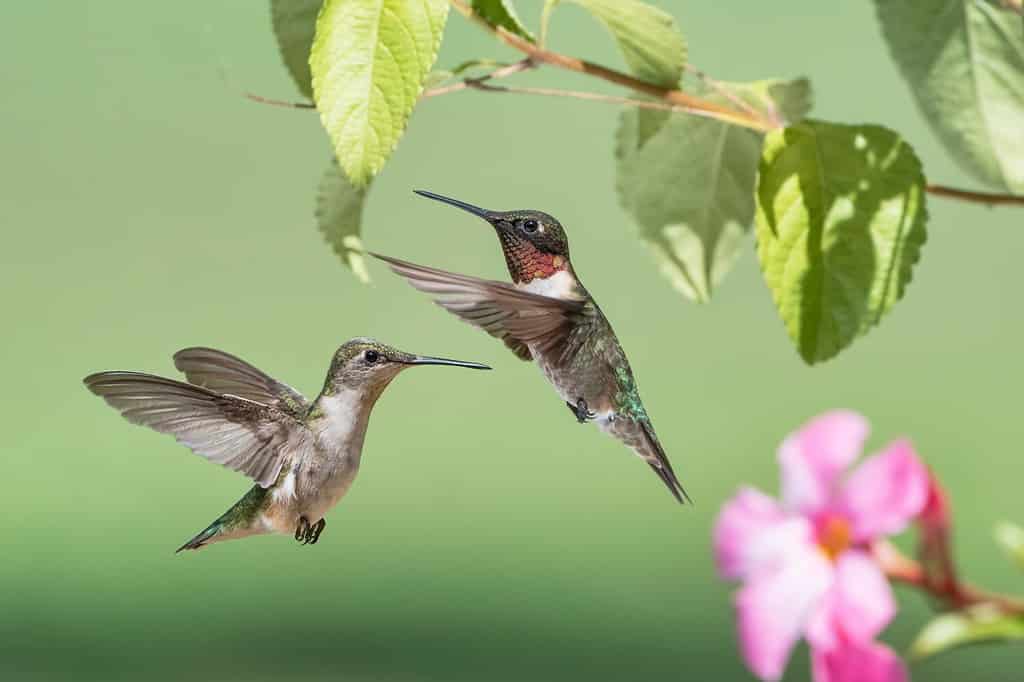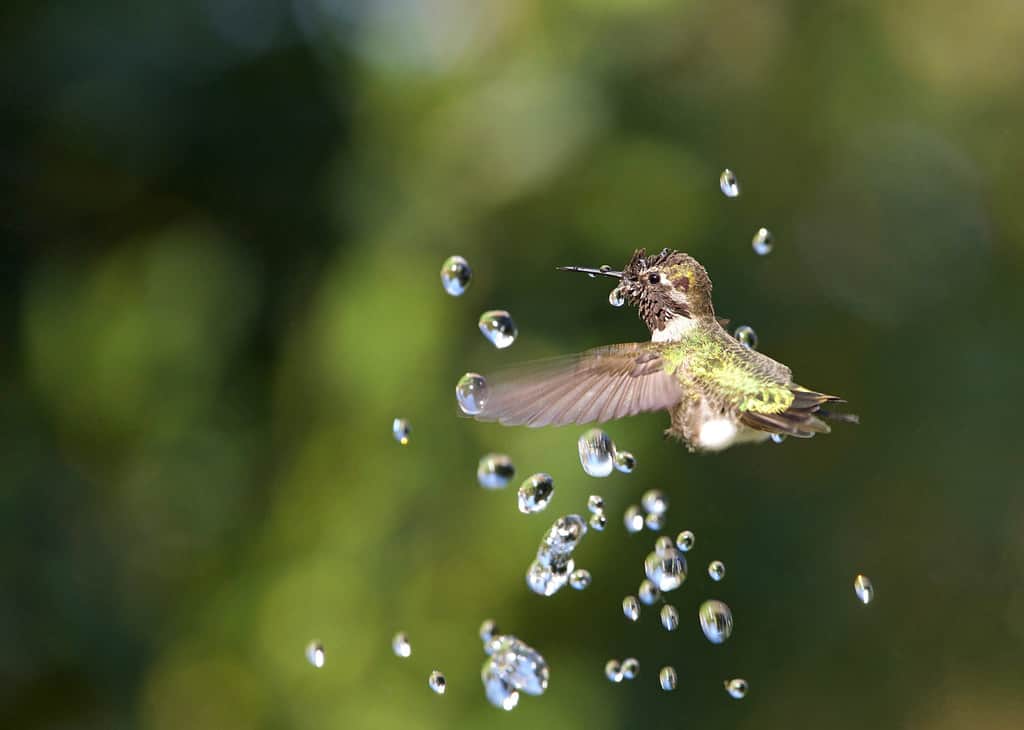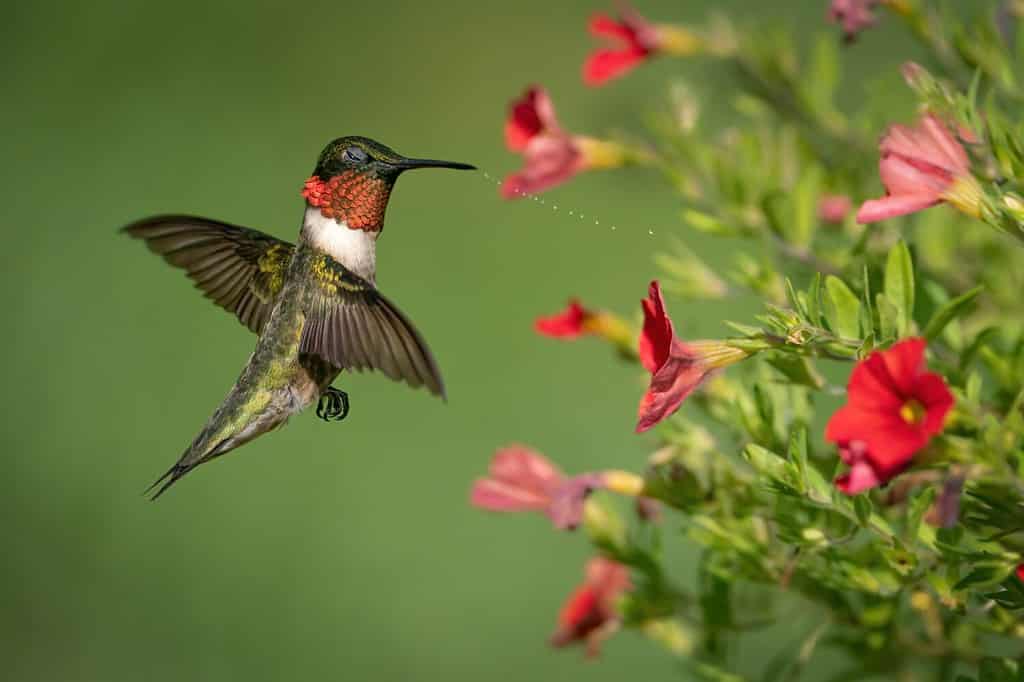Hummingbirds are among the smallest birds in the world. These tiny, fast-flying birds drink sweet flower nectar and flap their wings rapidly to hover in the air as they do so. They are important pollinators and a favorite among gardeners and birdwatchers alike, bringing a flash of jewel-toned color to a summer garden landscape. However, if you set out a birdfeeder full of nectar or sugar water, you may notice that at the end of the summer and start of the fall, the hummingbirds start to become a rare sight. This might cause you to ask, when do hummingbirds leave Ohio? Where do they go? How common is it for hummingbirds to migrate? This article covers the basics about hummingbirds, common species in Ohio, and when they migrate away for a warmer winter in the south. Let’s go!
About Hummingbirds
There are over 360 species of hummingbirds in the world, which belong to the avian family Trochilidae. These tiny fluttering birds are very light and small, weighing between 2 and 20 grams. With long, thin bills and small wings, male hummingbirds often have bright-colored throat plumage caused by the feathers’ iridescent quality rather than pigment in the feathers themselves.
Hummingbirds are the only vertebrates that have the unique ability to hover, with their quick-moving wings keeping them afloat while they hover in one spot to drink nectar from flowers. Hummingbird wings beat an incredible 70 times each second when they are in flight, but can reach 200 beats per second when diving down from heights. Hummingbird hearts also beat very quickly, beating 225 times each minute at rest, but over 1,200 times each minute when in flight.
Hummingbirds fuel this fast-paced lifestyle by drinking nectar from flowering plants, while occasionally also eating small insects, which they feed to their young.

Male hummingbirds tend to be more colorful than their female counterparts.
©Bonnie Taylor Barry/Shutterstock.com
Hummingbirds in Ohio
Only a couple of species find themselves in Ohio, and only one nests in this midwestern state. If you’re lucky, you may see Anna’s hummingbirds, Rufous hummingbirds, Calliope hummingbirds, and Allen’s hummingbirds. However, the only species that lives natively in Ohio and any state east of the Mississippi River is the ruby-throated hummingbird. If you see any of the others, savor the experience! Ohio is outside of their typical range, so take in the rare sight.
Some ruby-throated hummingbirds live in Ohio year-round. However, others migrate into the state. Those that migrate usually arrive during the spring months of April and May. Then they leave again to travel south in the fall. If you are lucky, you might also spot the Rufous hummingbird traveling its own migration route through Ohio during the late fall.

Anna’s hummingbirds are an unusual sight in Ohio, but have been spotted on rare occasions.
©Sheila Fitzgerald/Shutterstock.com
About Ruby-throated Hummingbirds
Ruby-throated hummingbirds (Archilochus colubris) are the only hummingbird species that lives in Ohio natively. You can often spot them in backyards, in flowering gardens, or even in open fields and pastures in Ohio. Male ruby-throated hummingbirds have bright red throats and green top feathers. They usually only reach about 3 inches long. Female ruby-throated hummingbirds look a bit more dull in comparison, with white throats and a slightly larger size compared to the males. Both male and female ruby-throated hummingbirds birds have an average lifespan of about 3 to 5 years old, though they have been found living longer.

Ruby-throated hummingbirds are the only hummingbird species to nest in Ohio.
©Cavan-Images/Shutterstock.com
Hummingbird Migration in Ohio
Hummingbirds migrate to follow the flowering seasons and stay out of the cold weather. Ruby-throated hummingbirds often start to arrive in Ohio beginning in early April or as early as March. The females usually arrive a few weeks before the male hummingbirds, but these tiny flying creatures will continue arriving for their summer stay in Ohio until the middle of June. Though it is possible for some ruby-throated hummingbirds to stay in Ohio all year long, it is typical for them to begin exiting the state at the end of the summer, around mid or late August. Some stragglers will stay longer.
Since hummingbirds usually arrive in Ohio starting in April and staying until August or September, get your birdfeeder ready early! Fill up a red hummingbird feeder with nectar made from sugar and water and set it out in March or early April so that the arriving birds know your yard is a good place to find food.
Where do they go after they migrate? Hummingbirds travel south to spend the winter in a warmer climate, in countries such as Mexico, Guatemala, Costa Rica, Belize, Honduras, El Salvador, Nicaragua, and Panama.

Most hummingbird species live in tropical climates. That includes the fiery-throated hummingbird, which feeds on Costa Rica’s beautiful flowers.
©Ondrej Prosicky/Shutterstock.com
Other Hummingbird Facts to Know
- Hummingbirds can get a little feisty. Since most species do not need to rely on other hummingbirds for survival, they might see other hummingbirds as competition for scarce nectar.
- Hummingbirds only have about 900 feathers. This is the fewest number of feathers of any bird species. This helps them to travel light!
- Only 17 species of hummingbirds regularly nest within the U.S. However, the ruby-throated hummingbird is the only species that nests east of the Mississippi River.
The photo featured at the top of this post is © redtbird02/Shutterstock.com
Thank you for reading! Have some feedback for us? Contact the AZ Animals editorial team.






